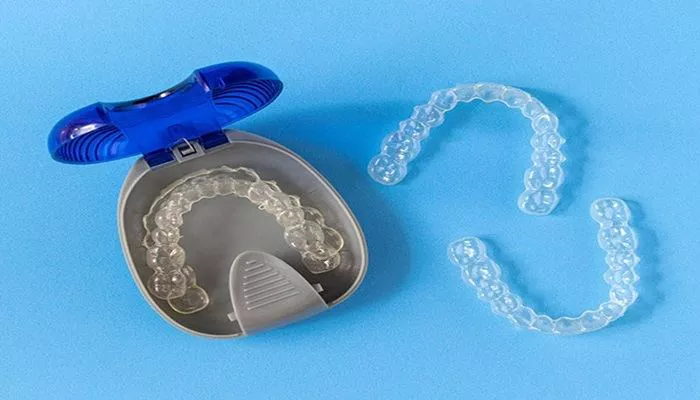Invisalign is a popular orthodontic solution that offers a discreet way to align teeth without traditional metal braces. Patients often choose this method due to its aesthetic appeal and convenience. However, one of the most common questions from those considering treatment is, “How long does it take to make Invisalign molds?” The answer depends on several factors, including the patient’s oral health, dental conditions like sensitive teeth or gum disease, and the efficiency of the dental practice involved.
This article provides a thorough look into the time it takes to make Invisalign molds, the steps involved, how oral health conditions such as gingivitis and sensitive teeth can affect the process, and what patients can expect before and after impressions are taken.
What Are Invisalign Molds?
Invisalign molds are precise 3D impressions of a patient’s teeth. These digital or physical impressions help create a series of aligners that gradually reposition the teeth over time. Unlike traditional impressions that use trays and putty, most Invisalign providers now use advanced 3D scanning technology to make the process faster and more accurate.
The Step-by-Step Process of Making Invisalign Molds
1. Initial Consultation
The journey begins with a consultation. This first visit usually lasts 30 to 60 minutes. The orthodontist will examine your oral health and determine if Invisalign is suitable for you. Conditions like gingivitis or gum disease must be addressed before molds are made.
2. Oral Health Preparation
If you suffer from sensitive teeth, gingivitis, or advanced gum disease, your dentist may postpone taking impressions. Treating these conditions is essential. Inflammation and bleeding gums can distort results, leading to ill-fitting aligners.
3. Taking Digital Scans or Impressions
The process of taking Invisalign molds typically takes 20 to 30 minutes. Most modern clinics use a 3D scanner, such as the iTero scanner, to capture a precise digital image of your teeth. These scans are comfortable and fast, which is beneficial for those with sensitive teeth.
4. Sending Scans to Invisalign
Once the digital impressions are complete, they are uploaded and sent to Invisalign’s manufacturing center. This transmission is done electronically and often happens on the same day.
5. Aligners Fabrication Timeline
After receiving your scans, Invisalign takes about 3 to 4 weeks to fabricate your first set of aligners. The company uses advanced 3D printing and modeling to create each aligner set. Factors like workload, shipping logistics, and corrections requested by your orthodontist may influence this timeline.
Factors That Affect How Long It Takes to Make Invisalign Molds
1. Clinic Technology
Clinics with modern 3D scanners tend to produce faster and more accurate results. Traditional putty-based impressions may take longer due to drying and shipping times.
2. Dental Conditions
Issues like gum disease, sensitive teeth, or gingivitis may delay the process. Dentists often recommend deep cleaning or treatment before proceeding.
3. Patient Cooperation
Some patients may need multiple scans if they move during the process or if the scans are incomplete. This adds extra time.
4. Communication With Invisalign
If your orthodontist requests adjustments to the treatment plan, it can delay the mold-making and aligner manufacturing timeline.
After the Molds Are Taken
Once Invisalign receives your digital impressions, they create a ClinCheck treatment plan. This plan shows a digital simulation of how your teeth will move. Your orthodontist reviews and approves this plan. Once approved, the aligners are manufactured.
Total Time From First Appointment to Aligner Delivery
On average, from the initial consultation to receiving your first set of aligners, it can take 4 to 6 weeks. This includes:
- 1 week for consultation and oral health check
- 1 week for taking and reviewing impressions
- 2 to 4 weeks for aligner fabrication and delivery
Can Sensitive Teeth or Gum Disease Delay the Process?
Yes. Sensitive teeth and gum disease are common reasons for delays. Dentists need to ensure your gums are healthy and inflammation-free before proceeding. Inflamed or receding gums may also alter the fit of the aligners.
Patients with gingivitis must follow a treatment plan that may include professional cleaning, improved oral hygiene, and possibly antibiotics or medicated mouthwash.
How to Prepare for Invisalign Molds
1. Maintain Oral Hygiene
Brush and floss daily. Regularly visit your dentist for cleanings. Healthy gums improve the accuracy of your Invisalign molds.
2. Address Dental Issues First
Treat gum disease or sensitive teeth before beginning Invisalign. Aligners cannot function properly if the gums are inflamed or receding.
3. Avoid Delays
Attend all scheduled appointments. Follow instructions during the scanning process. Delays often result from missed appointments or improper preparation.
What to Expect After Getting Invisalign Aligners
After your molds are approved and aligners are delivered, you begin wearing them as directed. Most patients wear each aligner set for 1 to 2 weeks before switching. You must wear them for 20 to 22 hours per day.
Monitoring Progress and Follow-Up Visits
Regular check-ins with your orthodontist are crucial. These visits ensure your teeth are moving as expected. If you develop sensitive teeth or gum irritation during treatment, your provider may adjust your plan.
Invisalign vs. Traditional Braces: Timing Comparison
Traditional braces require physical molds and longer setup time. Invisalign, with digital scanning, speeds up the mold-making process and enhances comfort, especially for those with sensitive teeth.
Conclusion
Making Invisalign molds is a detailed yet efficient process. It usually takes about 30 minutes for the scan and 3 to 4 weeks for aligners to arrive. However, dental conditions like gingivitis, sensitive teeth, or gum disease can delay progress. Prioritizing oral health is essential for a smooth Invisalign experience.
Patients are encouraged to consult their dental professionals to assess their readiness for treatment and ensure all underlying issues are addressed. By understanding the timeline and preparing accordingly, you can start your journey to straighter teeth without unnecessary delays.

